Posthuman Impressionism
Impressionism as an artistic direction ended around 1930, in order to give way to a more modern artistic expression.
However, modern times have led to its revival and it seems that it has never been more alive than it is today, as evidenced by the emergence of numerous new creators around the world.
Probably many will not agree with the probably too ambitious term “posthuman impressionism”, but it is only an attempt to draw attention to the novelty that AI generative tools bring us.
It is in this sense that this series of works was created, where an emphatically unusual and intense color was used, in order to best accompany the complex triptych narrative.
“Secluded Chimeric Place”
“Secluded Chimeric Place” is one of my favorite works.
Nothing pretentious, I just wanted to achieve a perfect composition of shapes and colors, which would give me a sense of balance, peace and introspection. Something like a portal to another world, a world of dreams and imagination, where you can lose your sense of space and time.
In that other world, elements of nature are combined with futuristic elements, trying to create a unique and surreal environment in which technology and nature will not be in conflict with each other, but combined into a healthy harmonious whole.
Sometimes, when I’m tired and longing for peace, I sit back in the armchair and watch for a long time. And it helps.
“The Harmony of Borges”
Left panel — Path of Illusions
Central panel — Garden of Choices
Right panel — Stairway of Reflections
“The Harmony of Borges” is a surreal landscape inspired by the labyrinth style narrative of Jorge Luis Borges, which we encounter in his work “The Garden of Forking Paths”.
In the left panel, an unseen lone figure stands at the start of a winding path that winds through a surreal forest, contemplating the journey ahead. She is aware that it is not only a journey through physical space, but also through the labyrinth of the mind, where every decision leads to new and unexplored territories.
The central panel shows a magnificent garden in full bloom, with paths stretching in different directions. At the heart of this garden is a pavilion, which symbolizes a place for reflection and decision-making. A lone figure, sitting on the edge of the pavilion, seems to be deep in thought, considering which path to take. This scene captures the essence of Borges’s concept of forking paths, where each possible choice creates a new reality, i.e. a new story.
The right panel shows a staircase partially shrouded in shadow breaking through blossoming trees, leading us into the unknown and symbolizing the uncertainty and mystery of the future.
Taken as a whole, the triptych serves as a visual representation of the complex and multi-layered nature of human existence, attempting to evoke in the viewer a sense of wonder and curiosity that should prompt him to reflect on his own life path and decisions.
“Dark Spirit of the Dockside”
Left panel — Stranded and Forgotten
Central panel — Lonely Prey
Right panel — Evening Silence
“Dark Spirit of the Dockside” is an expression of the admiration and respect I have always had for the brilliant writer Edgar Allan Poe.
Through the dynamics of the composition and the strong use of colors, with the dominant presence of the dark central figure who, when the moment comes, destroys the ships, I tried to create a mystical fatalistic atmosphere, which he always managed to achieve with ease in his works.
Each panel has its own unique narrative, but together they try to create a cohesive story that can be interpreted as a journey through life, which is always guided by the action of higher forces.
“The River Acheron”
Left panel — Charon
Central panel — Gathering of Souls
Right panel — Sigmund’s Underworld
As is known from Greek mythology, Acheron is a “river of pain” located in the underworld of Hades, over which Charon transports the souls of the dead in his boat. The most significant works on this subject were given by Michelangelo, Gustave Dore, as well as many other artists, who all, without distinction, put human figures in the foreground, with the desire to show their suffering and painful emotional state.
In this work, the creative process is completely different. The goal is to create a coherent whole through the combination of mythological, philosophical and psychological elements, and on the other hand to evoke the atmosphere, i.e. the spirit and essence of the river Acheron, with a conscious disregard in the physical and material aspect, which should bring depth and mysticism to the topic being treated.
In this sense Charon is barely visible, the gathering souls are like little whitish clouds, and similarly the enigmatic subconscious creatures are shown in the right panel. It is known that Freud in his seminal work “The Interpretation of Dreams” treated the river Acheron as a psychological underworld located below the conscious mind.
“Scent of Woman”
I have always been fascinated by Gustave Courbet’s provocative manifest of realism: “Origin of the World”. But, for me it is manifest of femitheism (my neologism), and I tried to highlight this in my work. No Adam, only Gnostic Eve as a mother of all gods!
In this sense, the triptych “Scent of Woman” was created, which not only tries to celebrate female energy and strength, but also invites the viewer to connect with that universal principle. Strong colors, abstract forms and a central figure create a composition that is both meditative and provocative, trying to balance between aesthetic beauty and deep symbolism.
The dominant female figure in the middle panel is draped in a flowing fabric, meant to evoke elegance and sensuality, and the blue background contrasts the warmth of the figure, representing a balance between inner and outer beauty.
On the other hand, the left and right panels serve only as a symbol of eternal life energy, which a woman carries with her as a symbol.
Pliny, the first-century historian of the ancient world, writes in his work “Natural History” of how: “hailstorms, whirlwinds and lightning are all quieted and dispelled by a face-off with a naked woman.”
And last of all, the old Catalan proverb says: “The sea calms down if it sees a woman’s cunt”!
(Catherine Blackledge: “A Natural History of Female Sexuality”).
“Watching the Bay As It Grew Darker”
Left panel — In Deadly Perils
Central panel — Before the Storm
Right panel — Anxious Dreamer
When it comes to the triptych as a form of artistic expression, the unwritten rule is to follow the narrative from left to right, not the other way around. “Watching the Bay …” is an exception in that sense.
The “Anxious Dreamer” emphasizes the ominous aspect of the bay, with a lone figure gazing towards the horizon, aware of impending change, while the urban landscape in the background suggests instability and potential looming danger.
The other two panels serve to complete the overall picture. And while in the “Before the Storm” the city lights still dominate the landscape, optimistically hinting at a peaceful denouement, the dominant ominous waves in the “In Deadly Perils” remove any doubt – the city in the background is not writing anything good!
As always, the aim is to achieve a multi-layered interpretation through rich symbolism, so that the work can be seen as an ordinary urban landscape, but also as a politically colored allegorical representation of the bleak future to come.

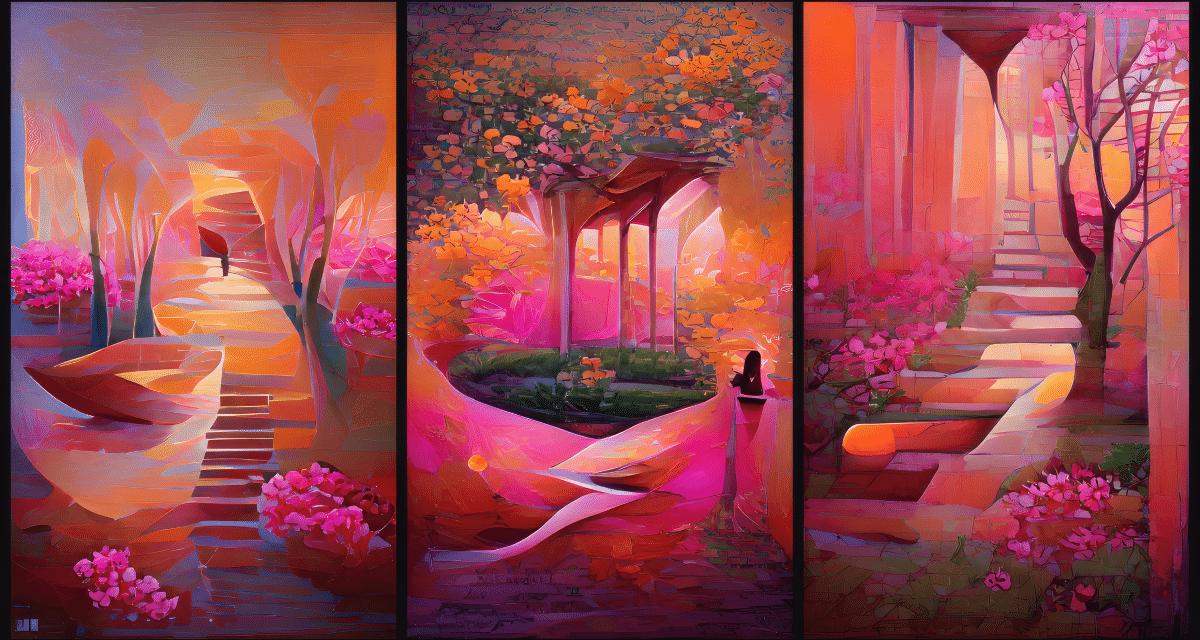

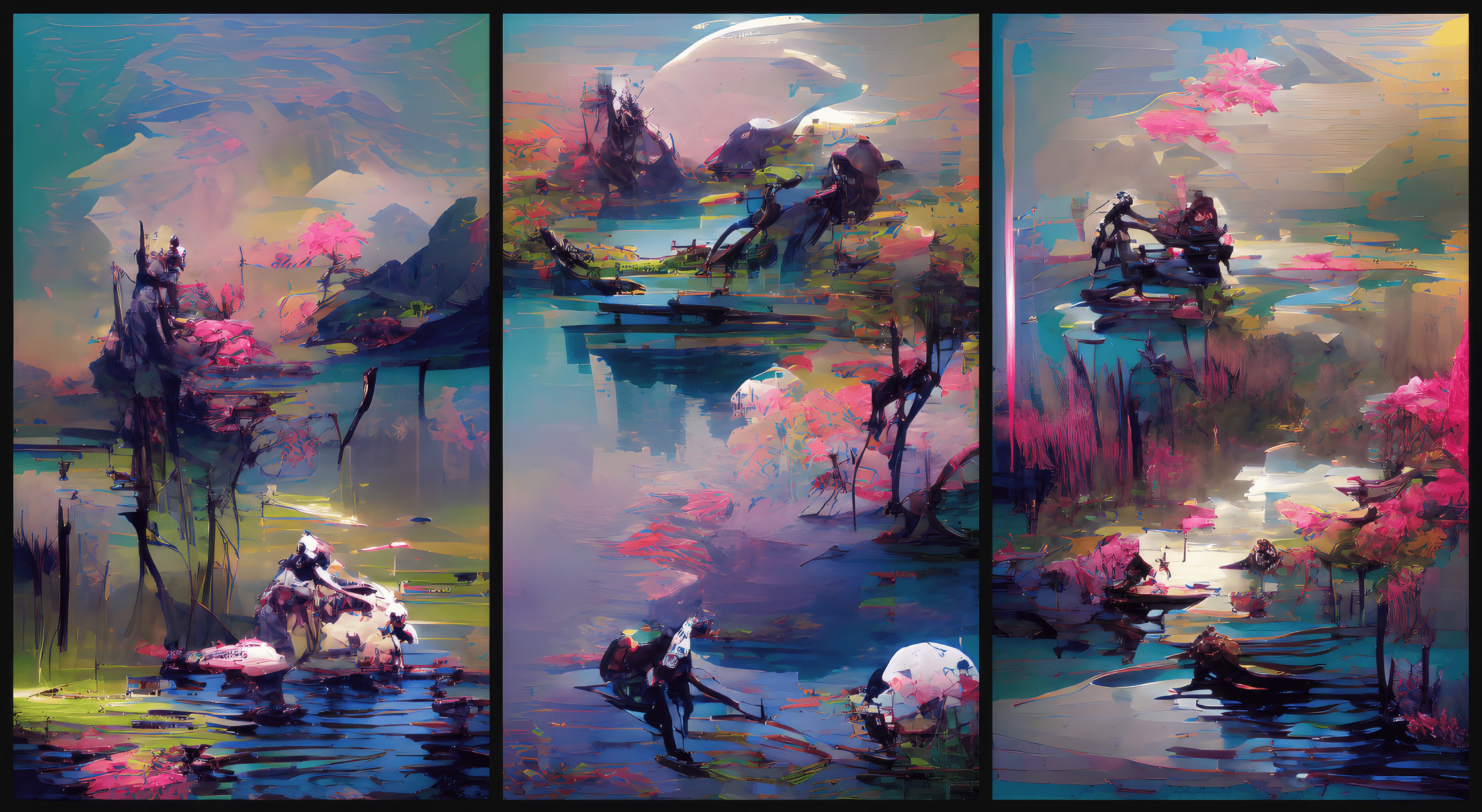

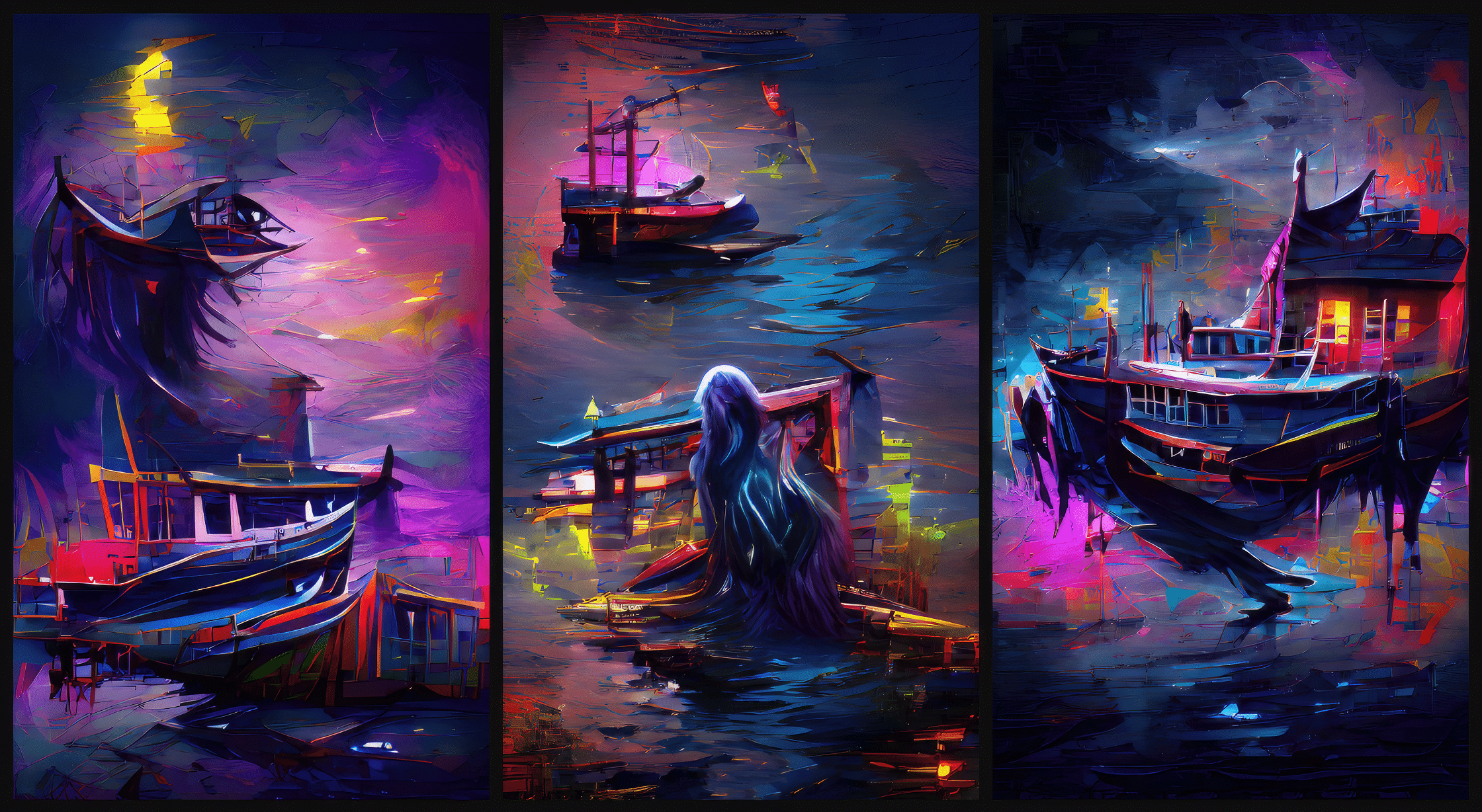
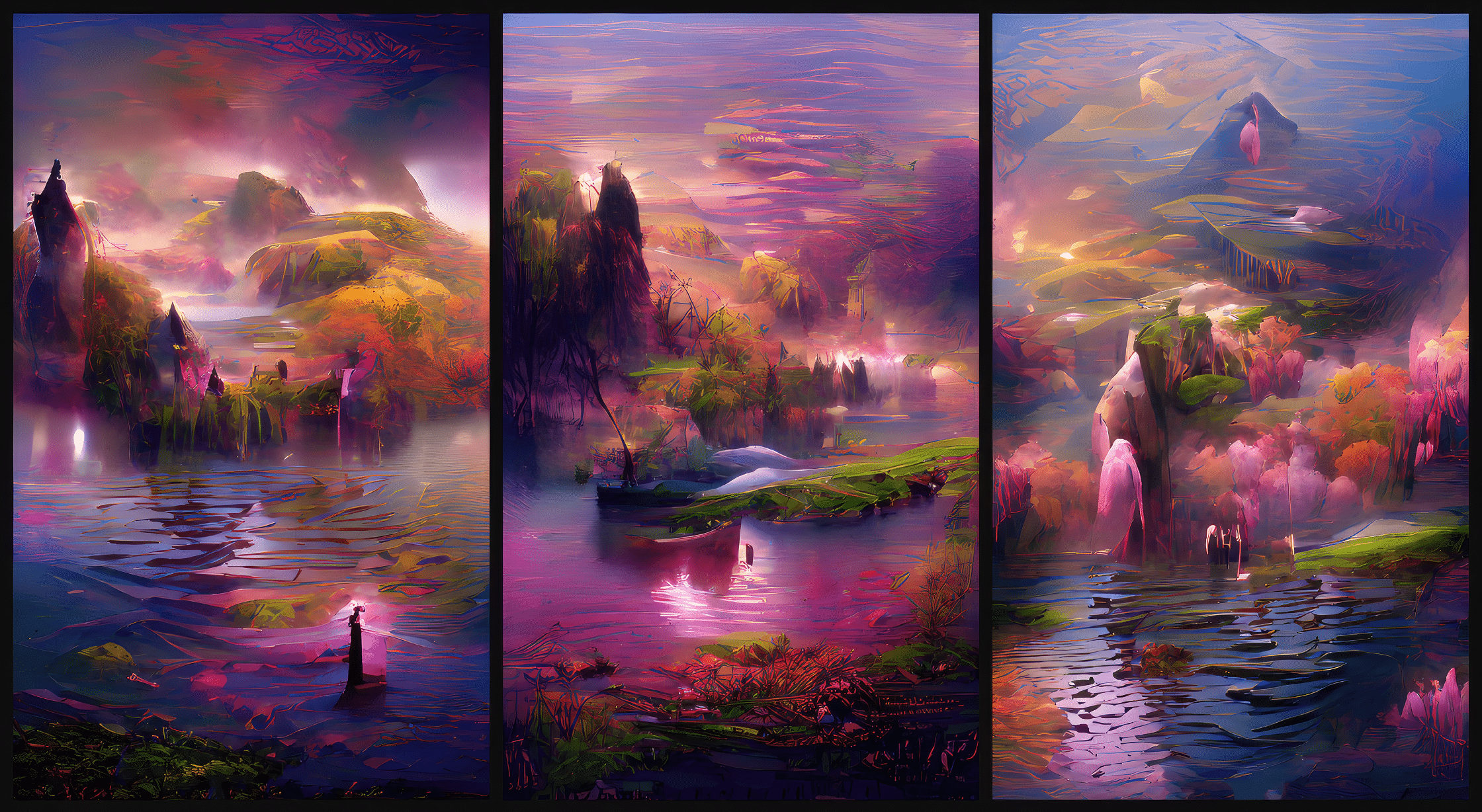
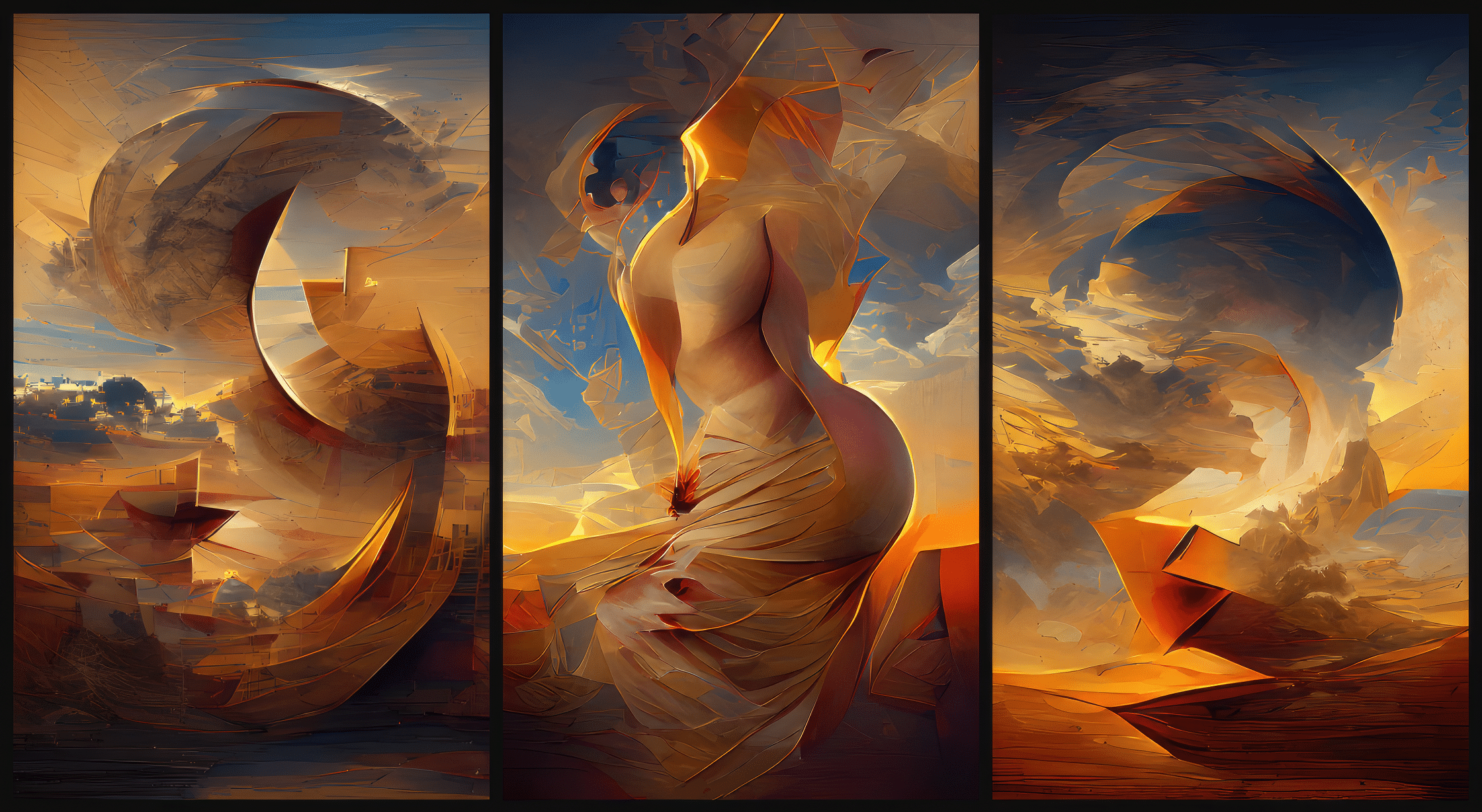

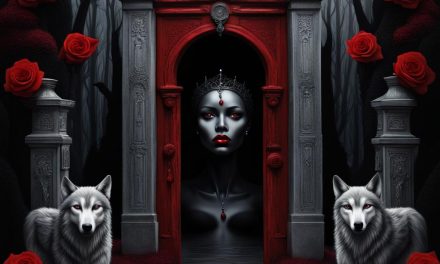
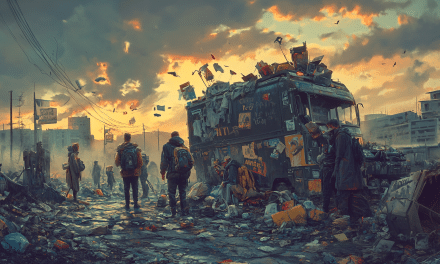
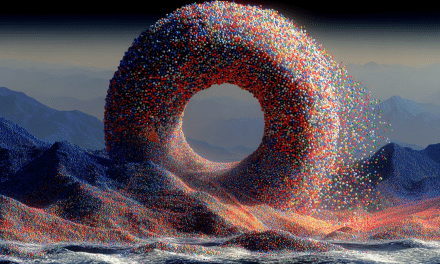

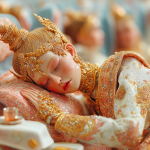
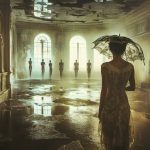
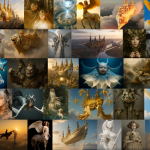
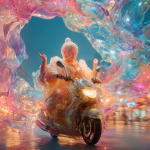






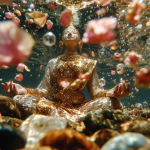
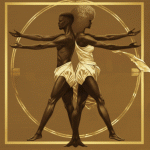

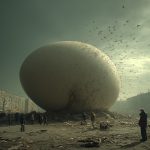





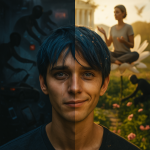


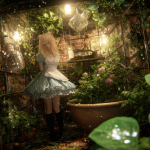
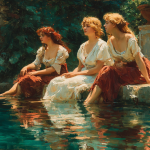
Comments